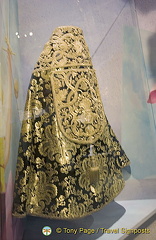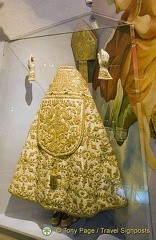
- IdiomaAfrikaans Argentina Azərbaycanca
Bahasa Indonesia Brasil Brezhoneg
Català Česky Dansk
Deutsch Dhivehi English
English English Español
Esperanto Estonian Euskara
Finnish Français Français
Gaeilge Galego Hrvatski
Íslenska Italiano Latviešu
Lëtzebuergesch Lietuviu Magyar
Malay México Nederlands
Norsk bokmål Norwegian nynorsk Polski
Português Română Slovenšcina
Slovensky Srpski Svenska
Tiếng Việt Türkçe Wolof
Ελληνικά Български Македонски
Монгол Русский Српски
Українська עברית العربية (مصر)
العربية العربية پارسی
कोंकणी বাংলাગુજરાતી
தமிழ் ಕನ್ನಡ ภาษาไทย
ქართული ខ្មែរ 中文 (繁體)
中文 (香港) 日本語 简体中文
한국어
Inicio / Austria / Melk - Danube River Cruise 197
Always a stop on a Danube river cruise, Melk's Benedictine monastery is situated on an isolated rock commanding the Danube, and is the largest in Austria. In its time and day it was the most important work of sacral Baroque in Europe. The monastery has a magnificent library with a collection of some 100,000 precious books and manuscripts.

!["..in whose splendour the glory of the cross is clear"
[Abbey Church - Melk Benedictine Abbey - Austria]](../../_data/i/galleries/Austria/Melk/IMG_6249-2s.jpg) "..in whose splendour the glory of the cross is clear" [Abbey Church - Melk Benedictine Abbey - Austria]
"..in whose splendour the glory of the cross is clear" [Abbey Church - Melk Benedictine Abbey - Austria] 'MS Poetry' moored in Melk
'MS Poetry' moored in Melk 'MS Poetry' moored in the Wachau Valley
'MS Poetry' moored in the Wachau Valley 'The City on the Mountain' tells of the Monte Cassino Monastery (H)
'The City on the Mountain' tells of the Monte Cassino Monastery (H) .. on the other hand by the victors laurels over the monk, who has achieved spiritual fulfillment, in the nave fresco
.. on the other hand by the victors laurels over the monk, who has achieved spiritual fulfillment, in the nave fresco 1702 transformation of this fortification into a baroque sanctuary (H)
1702 transformation of this fortification into a baroque sanctuary (H) 17th c. globe of the world. Australia is missing continent and California is on an island
17th c. globe of the world. Australia is missing continent and California is on an island A busy Melk town square
A busy Melk town square A high point of the baroque monastery is the Abbey church
A high point of the baroque monastery is the Abbey church A re-usable coffin - not one of the successful ideas of Joseph II
A re-usable coffin - not one of the successful ideas of Joseph II Abbey Church
Abbey Church Abbey church plaque (H)
Abbey church plaque (H) Abbot Dietmayr's vestment
Abbot Dietmayr's vestment Abbot Dietmayr's vestment
Abbot Dietmayr's vestment Abbot Dietmayr's vestment
Abbot Dietmayr's vestment